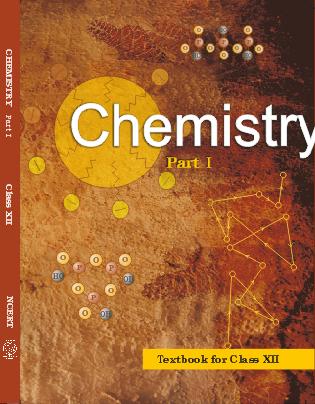NCERT Solutions class 12 Chemistry The p block elements solutions are available in PDF format for free download. These ncert book chapter wise questions and answers are very helpful for CBSE board exam. CBSE recommends NCERT books and most of the questions in CBSE exam are asked from NCERT text books. Class 12 Chemistry chapter wise NCERT solution for Chemistry part 1 and Chemistry part 2 for all the chapters can be downloaded from our website and myCBSEguide mobile app for free.
Download NCERT solutions for The p block elements In text Questions as PDF.

NCERT Class 12 Chemistry Chapter-wise Solutions
- 1 – The Solid State
- 2 – Solutions
- 3 – Electrochemistry
- 4 – Chemical Kinetics
- 5 – Surface Chemistry
- 6 – General Principles and Processes of Isolation of Elements
- 7 – The p-Block Elements
- 8 – The d-and f-Blocks Elements
- 9 – Coordination Compounds
- 10 – Haloalkanes and Haloarenes
- 11 – Alcohols, Phenols and Ethers
- 12 – Aldehydes, Ketones and Carboxylic Acids
- 13 – Amines
- 14 – Biomolecules
- 15 – Polymers
- 16 – Chemistry in Everyday Life
CHAPTER SEVEN THE P-BLOCK ELEMENTS
- 7.1 Group 15 Elements
- 7.2 Dinitrogen
- 7.3 Ammonia
- 7.4 Oxides of Nitrogen
- 7.5 Nitric Acid
- 7.6 Phosphorus – Allotropic Forms
- 7.7 Phosphine
- 7.8 Phosphorus Halides
- 7.9 Oxoacids of Phosphorus
- 7.10 Group 16 Elements
- 7.11 Dioxygen
- 7.12 Simple Oxides
- 7.13 Ozone
- 7.14 Sulphur – Allotropic Forma
- 7.15 Sulphur Dioxide
- 7.16 Oxoacids of Sulphur
- 7.17 Sulphuric Acid
- 7.18 Group 17 Elements
- 7.19 Chlorine
- 7.20 Hydrogen Chloride
- 7.21 Oxoacids of Halogens
- 7.22 Interhalogen Compounds
- 7.23 Group 18 Elements
NCERT Solutions class 12 Chemistry The p block elements
In-text question
1. Why are pentahalides more covalent than trihalides?
2. Why is  the strongest reducing agent amongst all the hydrides of Group 15 elements?
the strongest reducing agent amongst all the hydrides of Group 15 elements?
3. Why is  less reactive at room temperature?
less reactive at room temperature?
4. Mention the conditions required to maximize the yield of ammonia.
5. How does ammonia react with a solution of  ?
?
6. What is the covalence of nitrogen in ?
?
7. Bond angle in  is higher than that in
is higher than that in  . Why?
. Why?
8. What happens when white phosphorus is heated with concentrated NaOH solution in an inert atmosphere of  ?
?
9. Write a balanced equation for the hydrolytic reaction of  in heavy water.
in heavy water.
10. What happens when  is heated?
is heated?
11. What is the basicity of  ?
?
12. What happens when  is heated?
is heated?
13. List the important sources of sulphur.
14. Write the order of thermal stability of the hydrides of Group 16 elements.
15. Why is  a liquid and
a liquid and  a gas?
a gas?
16. Which of the following does not react with oxygen directly? Zn, Ti, Pt, Fe
17. Complete the following reactions:
(i) 
(ii) 
18. Why does  act as a powerful oxidizing agent?
act as a powerful oxidizing agent?
19. How is  estimated quantitatively?
estimated quantitatively?
20. What happens when sulphur dioxide is passed through an aqueous solution of Fe(III) salt?
21. Comment on the nature of two S-O bonds formed in  molecule. Are the two S-O bonds in this molecule equal?
molecule. Are the two S-O bonds in this molecule equal?
22. How is the presence of  detected?
detected?
23. Mention three areas in which  plays an important role.
plays an important role.
24. Write the conditions to maximize the yield of  by Contact process.
by Contact process.
25. Why is  for
for  in water?
in water?
26. Considering the parameters such as bond dissociation enthalpy, electron gain enthalpy and hydration enthalpy, compare the oxidising power of  and
and  .
.
27. Give two examples to show the anomalous behaviour of fluorine.
28. Sea is the greatest source of some halogens. Comment.
29. Give the reason for bleaching action of  .
.
30. Name two poisonous gases which can be prepared from chlorine gas.
31. Why is ICl more reactive than  ?
?
32. Why is helium used in diving apparatus?
33. Balance the following equation: 
34. Why has it been difficult to study the chemistry of radon?
NCERT Solutions class 12 Chemistry
NCERT Solutions Class 12 Chemistry PDF (Download) Free from myCBSEguide app and myCBSEguide website. Ncert solution class 12 Chemistry includes text book solutions from both part 1 and part 2. NCERT Solutions for CBSE Class 12 Chemistry have total 16 chapters. 12 Chemistry NCERT Solutions in PDF for free Download on our website. Ncert Chemistry class 12 solutions PDF and Chemistry ncert class 12 PDF solutions with latest modifications and as per the latest CBSE syllabus are only available in myCBSEguide
To download NCERT Solutions for class 12 Chemistry, Physics, Biology, History, Political Science, Economics, Geography, Computer Science, Home Science, Accountancy, Business Studies and Home Science; do check myCBSEguide app or website. myCBSEguide provides sample papers with solution, test papers for chapter-wise practice, NCERT solutions, NCERT Exemplar solutions, quick revision notes for ready reference, CBSE guess papers and CBSE important question papers. Sample Paper all are made available through the best app for CBSE students and myCBSEguide website.

Test Generator
Create question paper PDF and online tests with your own name & logo in minutes.
Create Now
Learn8 App
Practice unlimited questions for Entrance tests & government job exams at ₹99 only
Install Now